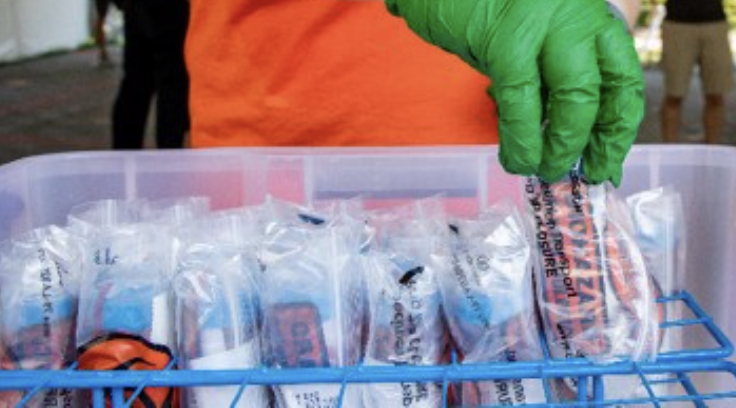Photo: Testing is around the corner
By Jamal Saeh, Kate Jeffrey, Larry Schmidt
The last academic year left many parents and students full of anxiety. Will remote learning work? Why can’t schools start with hybrid now? How can we help remove obstacles for increased in-person learning?
School started this year a little rocky despite heroic efforts by teachers. Technology did not always cooperate, some kids were in tears, and parents’ work schedules were disrupted. Some were luckier and fared better. As part of the next phase, the school administration presented a hybrid model that involves approximately six hours of in-person learning per week and trimmed curricula. Little has been presented by BPS leadership about the constraints behind this model or the rationale for the timetable for the hybrid.
In stark contrast to BPS, multiple K-12 systems have initiated full four to five day in-person models owing to thorough planning geared at removing obstacles such as air quality issues and Covid-19 surveillance. It’s therefore not surprising that many Belmont parents remain worried that their children will continue to fall behind when compared to their peers around the country who will benefit from more robust in-person learning.
All school administrators and committees are grappling with the question: “How do you maximize education while minimizing the risk of infection?” Inherent in this question is an acceptance of risk. While the risk can never be zero, science can help us quantify the risk and guide our strategies for maximizing educational opportunities.
Recent quantitative analysis of various school opening scenarios, including one similar to the Belmont Public Schools hybrid model, suggests that the risk of infection is very low and supports schools opening in hybrid now. For example, based on Glanz et al., the risk is low for a BPS student to come to school with the virus. If some do, with current risk mitigation countermeasures, Cohen et al conclude that the cumulative risk is also very low.
To further reduce the risk and to better enable more in-person learning opportunities, multiple K-12 schools have initiated surveillance testing (e.g. Wellesley, Belmont Hill, Boston Public Schools, NH, UN Int). A parent-led proposal will be presented at the upcoming School Committee meeting advocating for a cost-effective surveillance strategy.
Two key barriers preventing routine testing are cost and logistics, and we believe we’ve made progress on both fronts. We’ve identified a promising ready-to-deploy solution from Mirimus labs that couples the gold standard RT-PCR test with a strategy to pool saliva samples from multiple individuals followed by a deconvolution step to identify the infected individual. The saliva collection is easy, results are provided within 12 hours for approximately $15/person. However, the estimate for the often requested weekly testing of the 4,800 BPS community is more than $2 million for the academic year, and more prohibitive for twice weekly.
We propose a pragmatic, scientifically driven solution. All 4,800 BPS members can be tested ahead of the start of the hybrid phase for approximately $75,000. This will allow the identification and quarantine of infected individuals while students are in remote thus minimizing disruption. Once the hybrid starts, weekly surveillance is possible via random sampling of the BPS population. Random testing is a well-established scientific alternative to testing everyone. Experts recommend(1,2) that, for a district like BPS, a 7.5 percent sampling threshold can be adopted as an effective surveillance metric, a rate consistent with the surveillance plans implemented in independent schools. We estimate the cost of weekly testing to be $325,000 for the entire year, which ignores the likely possibility that costs will decline going forward. The cost includes testing teachers.
In conclusion, our view is that a robust surveillance testing regimen is within reach financially for BPS and can be implemented in days. However, the surveillance testing should not be viewed as a prerequisite for executing BPS’ existing reopening plan given Belmont’s very low rates of community spread. Such a program makes it easier to track conditions in real time and reduces risks of larger outbreaks. It should be implemented along with a broader set of changes to the BPS reopening plan which enable much more substantial in-person instruction opportunities for our students. If the extra peace of mind this provides enables our students and teachers to have much more robust face-to-face interactions, this will be money very well spent.
Jamal Saeh is the Executive Director and Global Program Leader at a local pharmaceutical company. He is a Belmont parent to two BHS students.
Kate Jeffre is an immunologist at Massachusetts General Hospital and Harvard Medical School. She is a Belmont parent to a first grader.
Lawrence Schmidt is the Victor J. Menezes Career Development Professor of Finance at the Massachusetts Institute of Technology’s Sloan School of Management. He is a Belmont parent of three children.








Last week I wrote to Wes Chin, head of the Belmont Health Department, asking about base-line COVID tests for each student prior to resuming in-school classes. The larger question was how to manage on-going COVID screening.
Thank you to the authors of this letter for showing a possible way back to in-school attendance and education.
Linda Oates, RN, BSN, MPH
Last week I wrote to Wes Chin, Belmont’s Health Department director, asking him about having base-line negative COVID tests prior to each student’s return to on-site in-school classes.. This letter re: on-going COVID testing offers a solution for resumption of a more normal attendance and educational schedule. Thank you to the writers for sharing.
Linda Oates, RN, BSN, MPHi